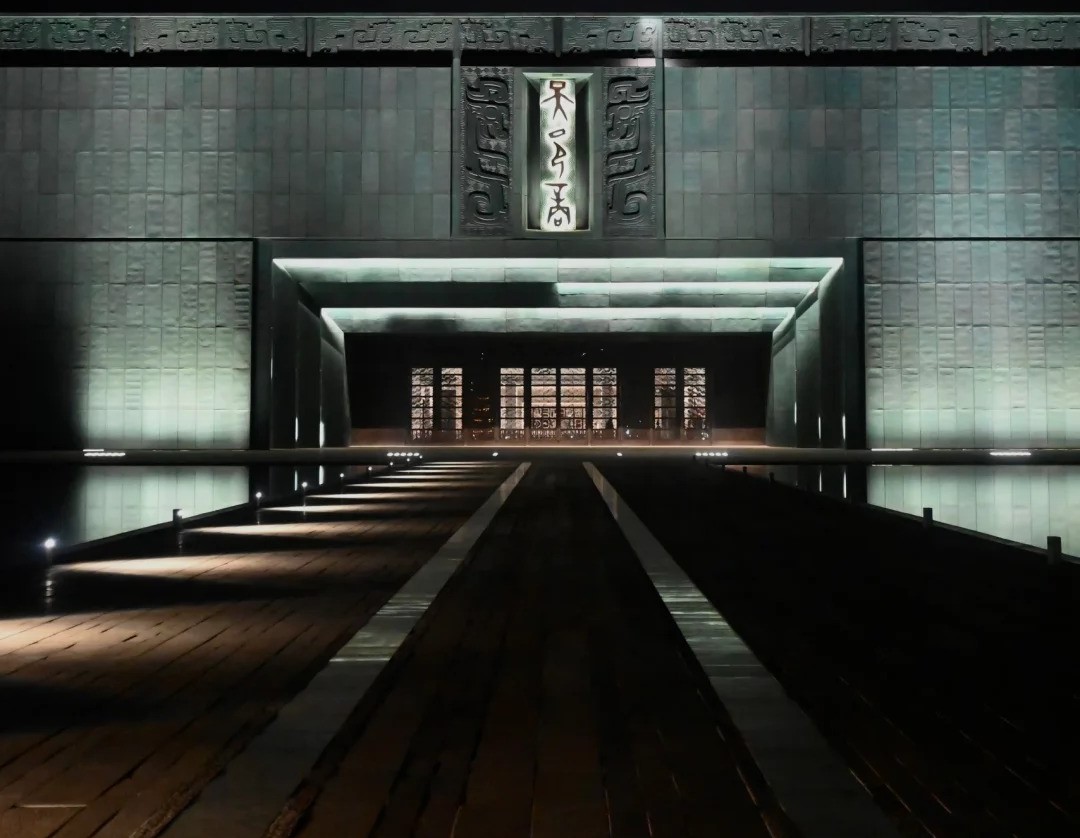Yin Xu
Historical Overview
Yin Xu served as the political and cultural center of the Shang Dynasty for 273 years, spanning 12 kings. The site’s discovery revolutionized the understanding of ancient China, confirming historical records of the Shang Dynasty through tangible evidence. Key events include the development of China’s earliest written system—oracle bone script—used for divination and record-keeping, and the flourishing of bronze ritual vessels, which symbolized royal authority. The 1976 excavation of Fu Hao’s Tomb, one of the few undisturbed royal tombs, unveiled over 400 bronze artifacts and jade treasures, highlighting the dynasty’s wealth and craftsmanship. Yin Xu’s decline coincided with the rise of the Zhou Dynasty, marking a pivotal transition in Chinese history.
Structural Layout
The site is divided into three main zones:
- Royal Cemetery: Located northwest, it contains over 10 royal tombs, including the iconic Tomb of Lady Fu Hao, and 1,400 smaller burials.
- Palace and Temple Area: Centrally located, this zone features foundational remains of royal palaces, ancestral temples, and altars used for sacrificial rituals.
- Workshops and Settlements: Spread across the eastern and southern regions, these areas include bronze foundries, pottery kilns, and bone-working sites, reflecting the dynasty’s industrial scale.
Key structures include the Foundations of the Palace of Yin, the Oracle Bone Pits (where inscribed turtle shells and animal bones were unearthed), and the Hougang Village Site, showcasing daily life in the Shang period.
Major Attractions
- Tomb of Lady Fu Hao: The only undisturbed royal tomb discovered at Yin Xu, containing over 1,900 artifacts, including bronze weapons, jade ornaments, and bone tools, commemorating a powerful military leader and consort of King Wu Ding.
- Oracle Bone Inscriptions: Over 160,000 oracle bones have been unearthed, inscribed with early Chinese characters that provide insights into Shang politics, religion, and daily life.
- Simuwu Ding: The largest bronze ritual vessel ever found in China, weighing 832 kg, symbolizing the Shang’s advanced metallurgical techniques and royal ceremonies.
- Royal Tombs of the Shang Kings: These subterranean chambers, adorned with jade and bronze, reflect the dynasty’s belief in the afterlife and ancestral worship.
- Yin Xu Museum: A modern facility displaying excavated treasures, interactive exhibits, and replicas of oracle bones, offering a comprehensive overview of the site’s significance.
Suggested Itineraries
- Classic Route (2–3 hours):
- Museum Entrance → Oracle Bone Gallery → Simuwu Ding Exhibit → Tomb of Lady Fu Hao → Royal Tomb Cluster → Workshop Ruins
Highlights: Key artifacts and royal burials.
- Museum Entrance → Oracle Bone Gallery → Simuwu Ding Exhibit → Tomb of Lady Fu Hao → Royal Tomb Cluster → Workshop Ruins
- Extended Route (4–5 hours):
- Museum → Oracle Bone Pits → Palace Foundations → Bronze Foundry Site → Tomb of Lady Fu Hao → Royal Tombs → Yin Xu Park
Highlights: Industrial heritage and archaeological context.
- Museum → Oracle Bone Pits → Palace Foundations → Bronze Foundry Site → Tomb of Lady Fu Hao → Royal Tombs → Yin Xu Park
- Comprehensive Route (Full Day):
- Museum → Oracle Bone Gallery → Palace Foundations → Bronze/Pottery Workshops → Tomb of Lady Fu Hao → Royal Tombs → Hougang Village → Yin Xu Park → Evening Light Show (seasonal)
Highlights: In-depth exploration of all zones, including living history demonstrations.
- Museum → Oracle Bone Gallery → Palace Foundations → Bronze/Pottery Workshops → Tomb of Lady Fu Hao → Royal Tombs → Hougang Village → Yin Xu Park → Evening Light Show (seasonal)
Ticket Purchase
- Online: Book via the official Yin Xu Museum website or major platforms like Ctrip (up to 7 days in advance).
- On-Site: Tickets available at the museum entrance; limited during peak seasons.
- Prices:
- Peak Season (April–October): ¥70 (adults), ¥35 (students/seniors).
- Off-Season (November–March): ¥50 (adults), ¥25 (students/seniors).
- Free: Children under 1.2m, disabled visitors, and active military personnel.
Transportation
- By Train: Take a high-speed train to Anyang East Station, then a 20-minute taxi ride to the museum.
- By Bus: Local buses (Routes 1, 18, 26) stop near Yin Xu; alight at “Yin Xu Bowuguan” station.
- By Taxi: Direct service from Anyang city center (approximately 30 minutes).
- Departure: Exit via the museum’s north gate to access nearby Jingshan Park or the Anyang Ancient Town.
Best Time & Tips
- Peak Hours: Avoid 10 AM–2 PM; visit early (8:30 AM opening) or late afternoon.
- Crowds: Weekends and holidays are busiest; weekdays offer a quieter experience.
- Weather: spring (April–May) and autumn (September–October) are ideal for outdoor exploration.
- Essentials:
- Wear comfortable shoes (extensive walking required).
- Bring sun protection (hat, sunscreen) and water.
- Photography permitted (no flash in indoor galleries).
- Prohibited items: Large bags, drones, and selfie sticks (lockers available on-site).
- Guided tours (available in multiple languages) enhance understanding of the site’s historical context.
Contact Us
What Our Clients Say?
Based on 10,000+ traveler reviews
















